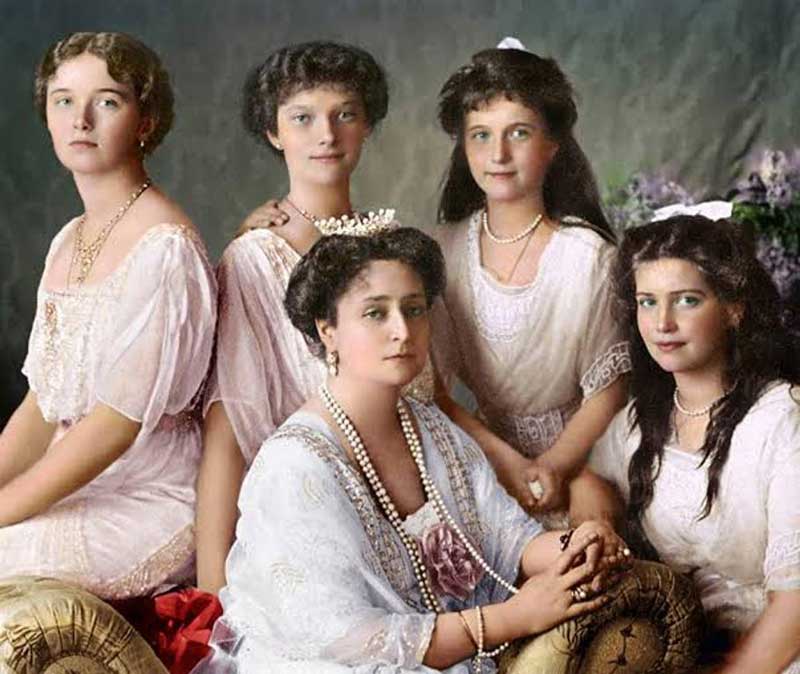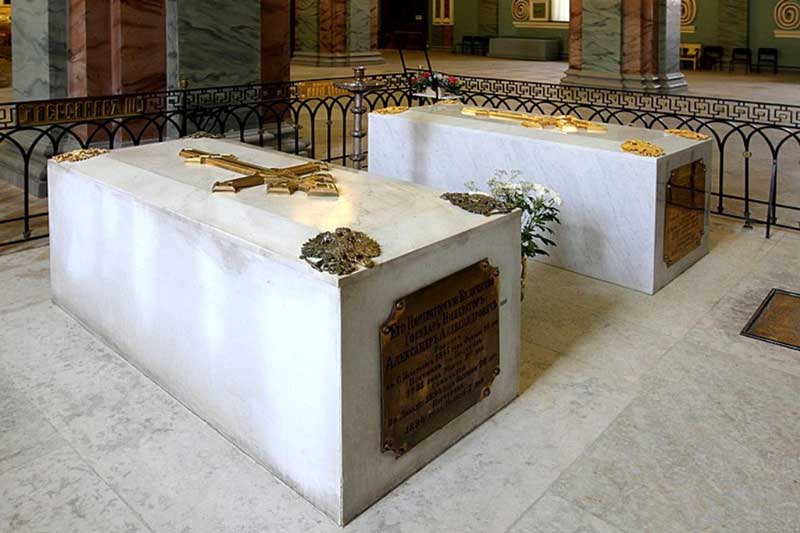
Born on 6 May 1868 (new style 18 May) in the Alexander Palace in Saint Petersburg, Nikolay Alexandovich was the eldest child of Emperor Alexander III and Empress Maria Feodorovna. He inherited the Russian throne on 20 October 1894, when his father died of kidney disease at the age of 49.Though he possessed great personal charm and had received a military education from his teacher, he was not really trained in the affairs of state. In fact, he had neither the upbringing nor the temperament to manage the complex tasks of ruling a vast empire. It is said that, even he confessed to one of his close friends that he was not prepared to become a Tsar and never wanted to become one, as he knew nothing about the job of ruling.
Though Nicholas was his designated heir, Alexander did not properly train his son to rule a vast country wracked with political turmoil. Alexander was a strict autocrat and used to rule the country with an iron fist. He cracked down the freedom of the press, curtailed the power of the people’s political institutions and made it compulsory, even for the non-Russians, to use only Russian language within the Russian Empire. As a result, Nicholas inherited a restless Russia. It was a disturbed beginning of Nicholas’ reign, when a few days after his coronation in 1894, many hopeful people gathered on a huge field in Moscow to receive coronation gifts and unfortunately around 1,400 of them died during a stampede. Nicholas’ casual and unsympathetic response to the incident earned him the nickname ‘Nicholas the Bloody.’

Within a month of the demise of his father, Nicholas II married Alexandra Feodorovna, also known as Alix of Hesse, a duchy in Germany, on 26 (old style 14) November 1894, at the Grad Church of the Winter Palace. Though a public figure, Empress Alexandra always preferred to spend the majority of her time at the palace at Tsarskoe Selo. She had a strong personality and encouraged Nicholas's autocratic tendencies. They had four daughters, Olga, Tatiana, Maria and Anastasia and in 1904, Alexandra gave birth to their only son, Alexis, who was diagnosed with Haemophilia. Under Alexandra’s influence, Nicholas sought the advice of many spiritualists and faith healers, to help the child in his distress. Grigori Rasputin was the most notable among those mystics, a self-proclaimed holy man, whom Alexandra believed had saved Alexei’s life. In fact, in 1908 when Alexei suffered a severe bleeding episode, Rasputin somehow eased the boy’s pain. However, the growing influence of Rasputin over the imperial couple caused obvious suspicion among the public, who resented his power.

During the early part of his reign, Nicholas II wanted to maintain the status quo in Europe. Nevertheless, subsequent to the economic growth in 1890, Russia started to expand its industry in the Far East and in 1891, started to construct the Trans-Siberian railroad, connecting Russia with the Pacific Coast. This alarmed Japan and they attacked Russia in 1904.In the war the Russian army had to surrender Port Arthur in the month of December and by the spring of 1905, fleet of Nicholas II was routed in the Battle of Tsushima. Consequent to these defeats, Nicholas II had no other option but to start peace negotiations with Japan that summer.
On the other hand, the Russian defeat led to strikes and riots in the country. On 5 January 1905, the troops opened indiscriminate fire on the peaceful demonstrators led by Father George Gapon in St. Petersburg, appealing to improve working conditions and establish a popular assembly. More than a thousand people were killed in the incident, which later became infamous as 'Bloody Sunday'. The bloody incident gave birth to a mass movement, as the indignant workers throughout the country went on strike and the sympathized peasants stood by their side. Thousands of uprisings were forcibly suppressed, which ultimately increased degree of tension. Nicholas II, who believed himself to be the absolute ruler as ordained by God, finally conceded to create an elected legislature, called the Duma.

On 1 September 1914, after the outbreak of World War I, the Imperial government renamed Saint Petersburg as Petrograd and Russia allied to France and Britain against Austria-Hungary and Germany. However, at the insistence of Alexandra, the emperor made the disastrous decision to dismiss his father’s cousin the Grand Duke Nicholas on 5 September 1915 and took himself the supreme command of the Russian army, against the advice of his ministers. Nevertheless, Russia endured major losses in the course of the Great War, had the largest number of deaths and was subject to extreme poverty and high inflation. With Nicholas often away from the capital, Alexandra took a more active role in government.
Naturally, the Russian public blamed Nicholas II for his poor military decisions, as well as Empress Alexandra and her confidante, the mystic Rasputin for their ill-advised role in the government. In December 1916, a group of disaffected nobles murdered Rasputin and in February 1917, widespread popular demonstrations began in the capital Petrograd. The agitation took a big turn on 23 February 1917, when a combination of severe cold weather and acute food shortages caused people of Petrograd to break shop windows to get bread and other necessities.

The troops in the capital and their officers had no reason to be loyal to the regime. They were angry and full of revolutionary fervor and sided with the public. On the morning of Sunday, 11 March 1917, as a vast crowd gathered in the city, people were dispersed after some 200 had been shot dead. During that time, Nicholas was in Mongilev, a Belarusian city on the Dnieper River. He ordered reinforcements to the capital and suspended the Duma. However, it was too late. The crowd became desperately violent and out of control and on 12 March, destructive actions took place all over the city. The arsenal was pillaged, Military Government building, police headquarters and a score of other police buildings were put to the torch. Before the evening, the insurgents captured the fortress of Peter and Paul, with its heavy artillery. Apart from that, 60,000 soldiers joined the public by the nightfall. Meanwhile, as the Duma elected their own provisional committee built with progressive bloc members, Nicholas II had no other choice but to step down from the monarchy. On 15 March 1917, he abdicated the throne and the Romanov family and their loyal servants were imprisoned in the Alexander Palace, around 30 minutes by train from the imperial capital city of Saint Petersburg, before being moved to Tobolsk, a historic capital of the Siberia region.
Meanwhile, in October 1917, the Bolshevik revolutionaries led by Vladimir Lenin overthrew the provisional government. Nicholas desperately sought political asylum in Britain, especially because his wife was the granddaughter of Queen Victoria. Unfortunately, the request was denied, as Nicholas's presence in the UK might provoke an uprising like the previous year's Easter Rising in Ireland. France also denied giving them political asylum as the ex-Empress was regarded as pro-German. The crown heads of Spain, Denmark, Sweden and Norway also considered ways to rescue the distressed family, but all of them were apprehensive about antagonizing the new government in Russia. As a result, the helpless Romanovs were left completely under the mercy of the newly formed revolutionary government. They were shifted to Yekaterinburg, which the Bolsheviks called the house of special purpose. It was a house with no bed linens, lots of dirt and dust and without enough plates or silverware. The soldiers were rude and hassled the family, drew pornographic images on the walls of the bathroom, complete with filthy and obscene poems about Alexandra.


In the early hours (around 2:00 am) of 17 July 1918, the royal family, along with their four remaining servants and the loyal family doctor, Eugene Botkin were awoken by their Bolshevik captors on the pretext that, as the anti-Bolshevik White Russian forces were approaching to attack Yekaterinburg, they must be moved down to the basement for their own safety. As they came down to the small cellar, it was announced that the presidium of the Regional Soviet has decreed their execution. Then suddenly, they were first attacked with a volley of bullets, then with the butts of guns and the bayonets. All seven of the Romanovs were murdered, allegedly at the specific command of Vladimir Lenin. After the execution, the bodies of the Romanovs and their servants were loaded onto a truck to reach the Koptyaki forest. Once the bodies were laid on the ground and undressed, they were sprinkled with sulphuric acid to disfigure them beyond recognition, burned and dumped into an abandoned mine shaft and then hastily buried elsewhere.

Much later, the remains of the Romanovs were detected by a team of Russian scientists in 1976, but kept it in secret till the collapsed of the Soviet Union. After confirmation of DNA test in 1994, the remains of Nicholas, Alexandra, three of their daughters (Anastasia, Tatiana and Olga) were given a state funeral on 17 July 1998, and were reburied in St. Petersburg in the crypt of the Cathedral of St. Peter and St Paul. However, the remains of Alexis and of another daughter, Maria were not found until 2007 and the DNA testing confirmed their identity in the following year.
